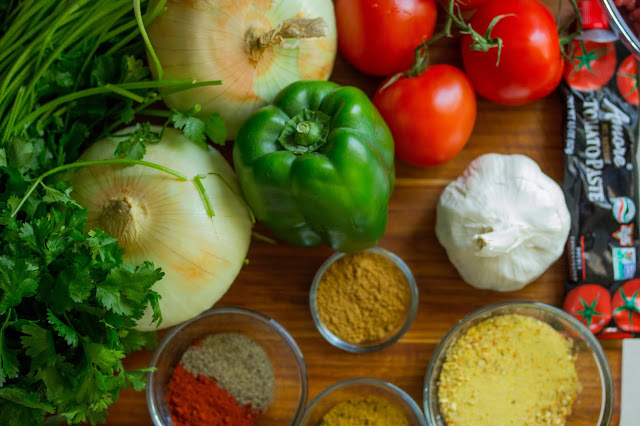Ayurvedic Diet and Nutrition
Nutrition is the process of providing or obtaining food (nutrients) necessary for the health and growth. Nutrition in Ayurveda is concerned with the dietary requirements (which differ from one person to another), quantity of food, time of food intake, method of food intake etc. There is a quote in Sanskrit “Annat bhavanthi bhootani” which means we are what we eat. Apart from that Ayurveda treats food as a medicine.
According to Ayurveda, a diet should include all six tastes
(sweet, sour, salty, bitter, pungent and astringent) in our main meal. Each
taste has its own role to play in the human body. Based on the ingredients, food is
considered to be of two kinds - those which are hard to digest (Guru)
and those which are light (Laghu).
Heavy foods
Based on the proportion of five
elements (earth, water, fire, air, space) every substance has certain
qualities. Qualities of food influence our body functions.
Heavy (Guru) is one of the healing qualities described in Ayurveda which is necessary for nourishing the body. Stability and steadiness of the body is represented by the balanced state of Heavy (Guru) quality. If it is imbalanced, this quality can also lead to diseased conditions.
A food is considered to be heavy if it possesses any of the following.
- Slows down metabolic rate, breathing or circulation.
- Causes weight gain.
- Nourishes the body.
- Induces sleep or slows thoughts etc.
Here are a few examples of heavy food.
Milk, Butter, Cheese, Meats, Brown rice, Basmati rice, Oat flour, Rice flour, Whole wheat flour, Banana, Papaya, Mango, Dates, Sugar, Potato, Sweet potato, Butternut squash, Coconut, Almond, Cashew nut etc.
Too much consumption of heavy food can lead to many
disorders in the body and mind.
Light food
Quality of being Light (Laghu)
is described as just the opposite of being Heavy (Guru). It is
considered to make our body active and causes lightness of mind which is
associated with clarity and alertness. Excess lightness can also lead to
emaciation or weakness.
Foods that are light help to
reduce weight, increase metabolic rate, eliminate metabolic toxins etc.
Here are some examples for light
food.
Rice soup, Millet, Popcorn, Asparagus, Broccoli, Spinach, Collard greens, Ginger, Black Pepper, Ajwain, Lemon, Cardamom etc.
Quantity of food
Both kinds of food are required in a specific quantity in
our meal for proper digestion. Heavy food such as meat and anything high in fat
and carbohydrates should be consumed till half of your satiation level. Light
food should be consumed till you are not overly satiated. Right amount of food enhances
the digestive fire and undergoes digestion easily.
Dietary rules according to Ayurveda
- Wash your feet, hands and face before consuming food.
- Take food at the proper time.
- Take freshly prepared foods. Reheating and refrigerating tend to lose nutritional values.
- Try to consume hot, unctuous and easily digestible food.
- Food should contain all the six tastes with predominance of sweet taste.
- Consume food with due attention.
- Avoid eating food either very quickly or slowly.
- Food should be consumed after taking a bath and after having hunger.
- Wash vegetables and fruits before cooking.
- Maintain proper hygiene.
- Use boiling, steaming, grilling etc.
- Increase the consumption of locally available fruits and green leafy vegetables.
- Consume food after considering one’s own constitution (Prakruthi) and personal likes and dislikes.
- Include more liquid food in your diet.
- Drinking lukewarm water helps in easy evacuation of bowel and urine. Also, it enhances the digestive power.
- Avoid heavy tasks immediately after meals.
Foods that we can consume daily or habitually
- Rice
- Wheat
- Barley
- Shashtika rice (A variety of Rice)
- Meat of animals living in Desert like lands.
- Jeevanti (Leptadenia reticulata)
- Young Radish
- Black/Chebulic Myrobalan (Terminalia chebula)
- Indian Gooseberry
- Green gram
- Sugar
- Ghee
- Pure water
- Milk
- Honey
- Pomegranate
- Rock salt
Ayurveda recommends certain drinks to be consumed after food
intake. These drinks possess properties opposite of those of the food but it is
compatible with them. It provides strength, contentment, proper movement of
food inside the alimentary tract, stability of body parts, loosening of hard
masses of food, liquefaction and digestion. Here are a few examples.
- Cold water is an ideal drink if the food consumed contains Barley, Wheat, Yogurt, Wine or Honey.
- Warm water is an ideal drink after consuming starchy foods, whey, buttermilk, fermented gruels, vegetable dishes or legumes like green gram.
- Honey mixed water is ideal for people with obesity
- Meat soup is ideal for emaciated people.
- Milk is best suited for those who are emaciated by diseases, medicines or therapies, debilitated by intense physical activities, fasting, exposure to sun or any other tiresome activities. Also good for children and aged.
Incompatible foods (Virudhahara)
Certain combinations of food which causes an increase of
metabolic toxins and does not expel out of the body is said to be Incompatible
food (Virudhahara). Continuous consumption of Virudhahara may
cause various skin diseases, indigestion, Hemorrhoids, obesity, infertility
etc.
Some examples are,
- Meat of animals of marshy region is incompatible with Black gram, honey, milk or germinated grains.
- Radish with fish
- Sour foods with Milk.
- Chicken with Curd.
- Fish and Black Pepper.
- Equal quantity of Honey and Ghee.
- Fish with milk or milk products.
Based on the personal constitution, we need to limit or
avoid certain foods. Ayurvedic diet is focused on promoting Dosha balance
within your body and mind. With the guidance of an Ayurvedic practitioner, you
could prepare a personal diet plan suitable for your body and mind based on
your Prakruthi.






Comments
Post a Comment